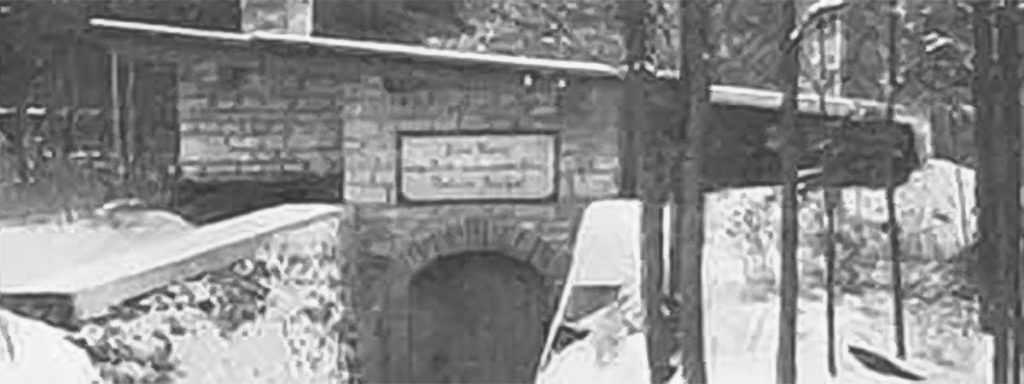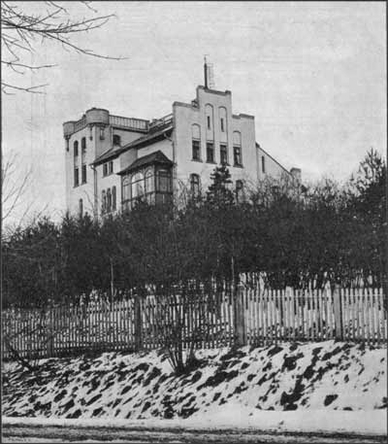
The history of the Earthquake Station
The emergence of the earthquake station, the great time of seismic research, the imminent demolition and finally the successful rescue
Historical Earthquake Station
The history of the Earthquake Station
The Directors of the Earthquake Station
Emil Wiechert (1898–1928)
Gustav Angenheister (1928–1945)
Julius Bartels (1946–1964)
Manfred Siebert (1964–1992)
Ulrich Christensen (1992–2003)
Wiechert’sche Erdbebenwarte Göttingen e.V. (since 2005)
Chronology of the most important milestones
1897
Emil Wiechert moves from Königsberg to Göttingen. He succeeds in constructing seismographs to deliver the first scientifically valuable recordings for exploring the Earth’s interior.
1898
Wiechert is appointed as associate professor on 28 January and, in February, Director of the Geomagnetic Institute, which is renamed to the Institute of Geophysics with corresponding competencies by decree of 2 July. It is the world’s first institute to work in this field. In the first five decades, the main focus of work is seismology.
1899
In February, the first earthquakes are measured at the observatory using pendulums and light pointers. In summer, further instrumental equipment is developed in the cellar of the observatory; Wilhelm Schlüter develops what he calls a klinograph.
1901, autumn
The Institute of Geophysics occupies the new building on the Hainberg hill.
1902
The Old Earthquake Vault is completed and put into operation right away. At the end of the year, the construction of the new institute can be regarded as largely completed.
From 1902
The Göttingen-based companies Bartels and Spindler & Hoyer play a major role in building the seismographs.
1903
The continuous seismic recordings with the astatic horizontal seismograph are started in January.
1905
Start of recordings with the vertical seismograph; the 17-tonne pendulum is also gradually introduced during that time; the Earthquake Station in Göttingen becomes one of the main stations in the international network for seismological research; Wiechert is appointed to the Chair of Geophysics as full professor.
1906
By 1906, astatic horizontal seismographs by Wiechert are already used outside Göttingen in: Leipzig, Potsdam, Strasbourg, Jena, Hamburg, Uppsala and Samoa. April: full recording of the P, S and surface waves of the San Francisco earthquake; following the Loma Prieta earthquake of 1989 in the same region, the data of the Göttingen station allows a direct comparison of the two quakes.
1908
Additional stations are set up in Clausthal, Heligoland and Tsingtau (China); active experiments with the so-called “Mintrop ball” are started in the same year, marking the beginning of the seismic exploration of near-surface geological layers.
1903-1914
Seismological research in Göttingen makes major progress in both seismogram evaluation and theory, based on the high-quality data delivered by the Wiechert seismographs.
Fundamental scientific work on seismology published at that time relates to: seismic attenuation (Angenheister), method for earthquake location (Geiger method), creation of earth models (Wiechert, Geiger, Gutenberg), calculation of amplitude ratios at boundaries (Zoeppritz equations), first reliable proof of the boundary between the Earth’s mantle and crust at 2,900 m depth (Gutenberg), microseismics (Gutenberg), head waves (Mintrop wave), inverse method for exploring the physical properties of the Earth’s interior based on the travel times of seismic waves measured on the Earth’s surface (Wiechert-Herglotz method).
1921
Mintrop establishes the company Seismos, searching predominantly for crude oil reservoirs on a global scale.
1923
The earthquake that destroyed Tokyo is fully recorded on 1 September 1923.
1928
After Wiechert’s death, Gustav Angenheister takes over as the institute’s director. The main focus of work is the study of the seismic surface waves and the survey of the underground for mining and construction purposes.
1945
The earthquake station in Heligoland is destroyed by bombs.
1945/46
Angenheister dies and J. Bartels becomes his successor. Under his direction, geomagnetism – in connection with the emerging space research – becomes the main field of work.
1947
The Earthquake Station Göttingen records the explosion that was to blow up bunkers in Heligoland.
1964
Bartels dies and M. Siebert takes over his position, initially on an interim basis, becoming full professor in 1968. The fields of research established under Bartels’ direction are continued and expanded, among them electromagnetic deep sounding by U. Schmucker from 1974.
1960-1990
Recording of all major nuclear explosions
1992
Ulrich Christensen becomes the institute’s new director. Besides his main fields of research (geodynamic models), seismology becomes a new focus. Michael Weber (today at the German Research Centre for Geosciences in Potsdam) comes to Göttingen. The institute leads the “Eifel Plume Project”. Recording of the explosion of a dud from World War II in Göttingen (Schützenplatz)
1998
Recording of the explosion of a dud from World War II in Göttingen (Pfalz-Grona-Breite)
2003
Christensen moves on to the MPI for Aeronomy, Katlenburg-Lindau, which operates today as the MPI for Solar System Research (MPS) in Göttingen. This position has been vacant since then.
2003
100 years of recording the stronger worldwide seismicity and the weaker regional seismicity
Since 2003
Seismological research is no longer carried out in Göttingen. The 100 years of operation of the Wiechert Earthquake Station continues (for now).
2005
16/06/2005: In view of the institute’s recent relocation to the northern area, the current director of the Institute of Geophysics, Prof. Karsten Bahr http://www.physik.uni-goettingen.de/verwaltung/members/Bahr.Karsten.html, orders that the operation of the Earthquake Station be discontinued with immediate effect. Despite some difficulties, the association (Wiechert’sche Erdbebenwarte Göttingen e.V.) and the institute’s staff manage to put the instruments into operation again after a few weeks.
Mid-June 2005: The Institute of Geophysics moves to the physics campus in the northern part of the University of Göttingen. The site is offered for sale by the State of Lower Saxony.
12/08/2005: The Earthquake Station and the scaffolding with the Mintrop ball pass into the ownership of the association “Wiechert’sche Erdbebenwarte Göttingen e.V.”. The Gaußhaus remains the university’s property and is maintained by the association “Wiechert’sche Erdbebenwarte Göttingen e.V.”. The purchase also comprises about half of the site of the former Institute of Geophysics.
More detailed information on the institute’s history can be found under M. SIEBERT (1997, 1998)




